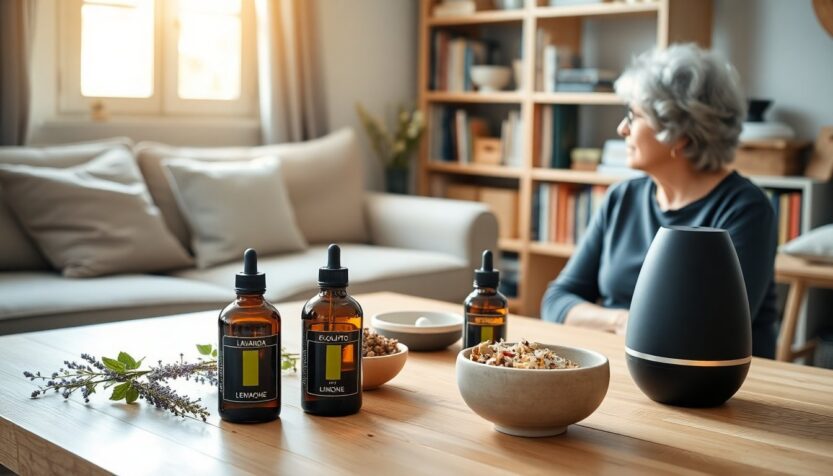As women transition into their 60s and beyond, they often encounter various health issues associated with the natural aging process. Common challenges include joint pain, cardiovascular problems, increased stress, and cognitive decline, all of which can negatively affect quality of life. While traditional medicine plays a crucial role in addressing these concerns, many women are increasingly turning to holistic approaches, notably the use of essential oils.
This article examines how essential oils, derived from various plant sources, can facilitate healing at the cellular level, providing an understanding of their potential therapeutic effects.
Understanding essential oils and their benefits
Essential oils are concentrated extracts obtained from different parts of plants, including leaves, flowers, stems, and roots. These oils encapsulate the plant’s natural essence and are celebrated for their therapeutic qualities. Each type of essential oil contains a unique blend of active components, known as active constituents, which contribute to their healing properties.
These compounds are recognized for their numerous benefits, including antioxidant, anti-inflammatory, antibacterial, and antiviral effects. This makes essential oils valuable tools for enhancing health at the cellular level.
The impact of aging on cellular health
The body is composed of cells, which are fundamental units of life. As individuals age, cellular function may decline, leading to issues such as inflammation and oxidative stress. Essential oils can positively influence our bodies at this level in various ways. For instance, oils like rosemary and oregano are rich in antioxidants that neutralize free radicals—unstable molecules that can damage cells and contribute to chronic illnesses. By reducing oxidative stress, these oils promote cellular vitality and longevity.
Addressing specific health challenges with essential oils
Chronic inflammation is a major concern for older adults, often associated with conditions like arthritis and heart disease. Essential oils such as ginger and turmeric are known for their potent anti-inflammatory properties, which can alleviate inflammation and enhance mobility. Utilizing these oils may lead to improved pain relief for those suffering from these ailments.
Moreover, oils like tea tree and lavender possess natural antimicrobial properties. They can aid in fighting infections by bolstering the immune system and reducing harmful bacteria, thereby promoting overall health.
Supporting hormonal balance
For women in their 60s, maintaining a stable hormonal balance is essential, especially during menopause. Essential oils such as clary sage and geranium can play a role in hormone regulation, alleviating symptoms related to hormonal fluctuations and fostering wellness at the cellular level.
Additionally, essential oils with antibacterial characteristics can combat bacterial infections, which is particularly beneficial for women with a compromised immune system. Meanwhile, mucolytic oils can help clear the respiratory passages, enhancing breathing, which is crucial for older individuals prone to respiratory issues.
Enhancing mental and emotional well-being
Some essential oils are known for their calming properties, which can significantly improve sleep quality and reduce anxiety. These benefits are particularly valuable for older adults who struggle with insomnia or heightened stress levels. Oils that promote relaxation can create a sense of tranquility, positively affecting mental health and emotional well-being.
This article examines how essential oils, derived from various plant sources, can facilitate healing at the cellular level, providing an understanding of their potential therapeutic effects.0
Notable essential oils for women over 60
This article examines how essential oils, derived from various plant sources, can facilitate healing at the cellular level, providing an understanding of their potential therapeutic effects.1
This article examines how essential oils, derived from various plant sources, can facilitate healing at the cellular level, providing an understanding of their potential therapeutic effects.2
This article examines how essential oils, derived from various plant sources, can facilitate healing at the cellular level, providing an understanding of their potential therapeutic effects.3
This article examines how essential oils, derived from various plant sources, can facilitate healing at the cellular level, providing an understanding of their potential therapeutic effects.4

